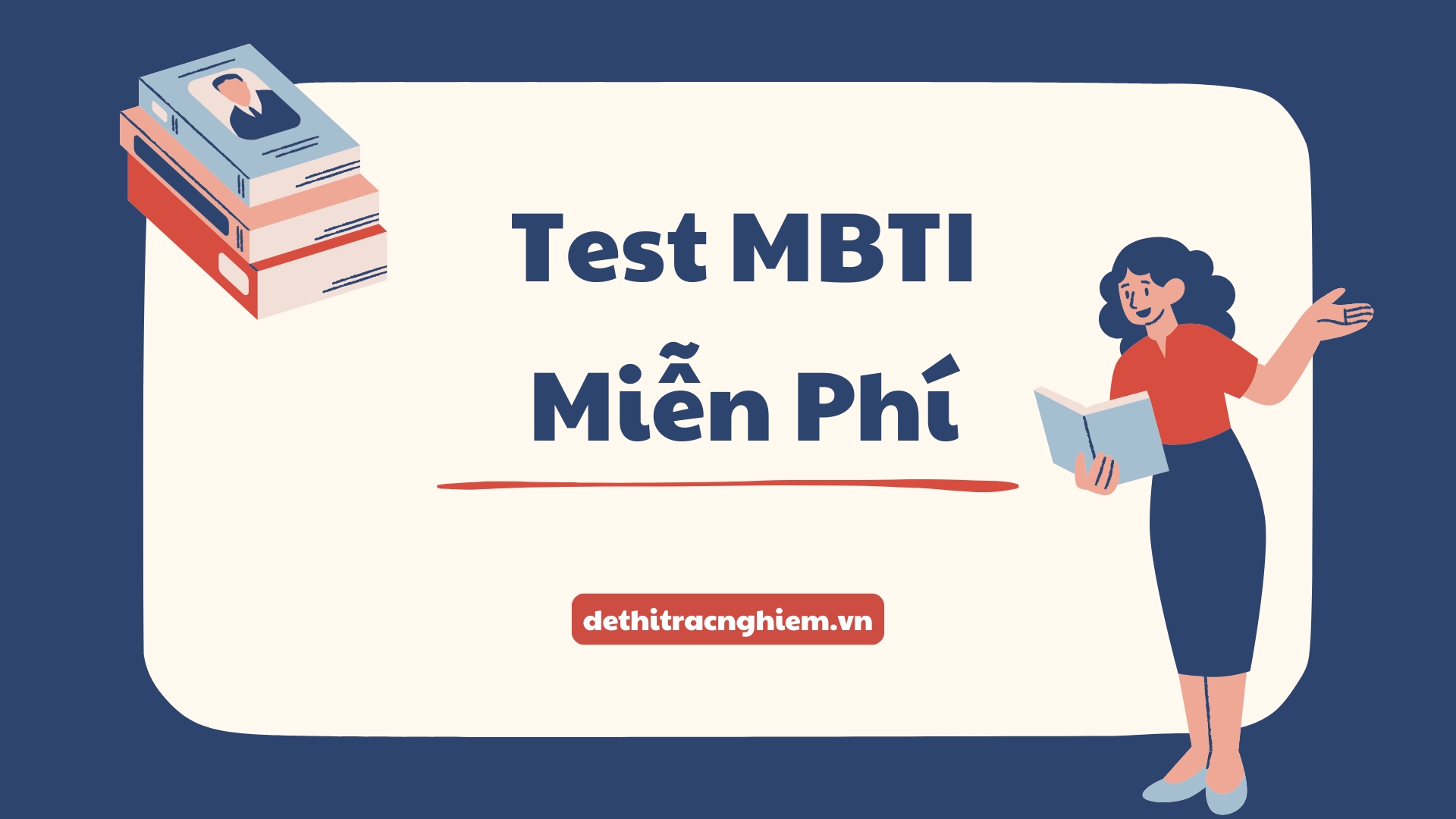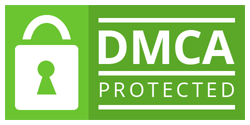Đề thi thử Đại học 2025 môn Tiếng Anh – Cụm liên trường THPT Nam Đàn – Thái Hòa (Nghệ An) là một trong những đề tiêu biểu thuộc Tổng hợp đề thi thử môn Tiếng Anh THPT QG, nằm trong chương trình Đề thi vào Đại học. Đây là đề thi thử do cụm liên trường THPT khu vực Nam Đàn và Thái Hòa – tỉnh Nghệ An phối hợp tổ chức, nhằm giúp học sinh lớp 12 đánh giá năng lực thực tế và rèn luyện kỹ năng làm bài thi trước kỳ thi Tốt nghiệp THPT Quốc gia năm 2025.
Đề thi được xây dựng dựa trên cấu trúc đề minh họa mới nhất của Bộ Giáo dục và Đào tạo, gồm đầy đủ các phần trọng tâm: ngữ âm (phát âm – trọng âm), ngữ pháp – từ vựng, chức năng giao tiếp, tìm lỗi sai, viết lại câu, và đọc hiểu. Các câu hỏi trong đề được sắp xếp theo mức độ từ dễ đến khó, bảo đảm tính phân hóa cao, giúp học sinh vừa củng cố kiến thức nền tảng vừa phát triển kỹ năng xử lý đề thi một cách nhanh nhạy, chính xác.
Hãy cùng Dethitracnghiem.vn luyện tập với đề thi thử của cụm liên trường THPT Nam Đàn – Thái Hòa (Nghệ An) và sẵn sàng bước vào kỳ thi Tốt nghiệp THPT năm 2025 với sự tự tin và kết quả vượt trội!
- Số trang: 4 trang
- Hình thức: Trắc nghiệm
- Thời gian làm bài: 50 phút (không kể thời gian phát đề)
ĐỀ THI THỬ ĐẠI HỌC MÔN TIẾNG ANH NĂM 2025 CỤM LIÊN TRƯỜNG THPT NAM ĐÀN – NGHỆ AN
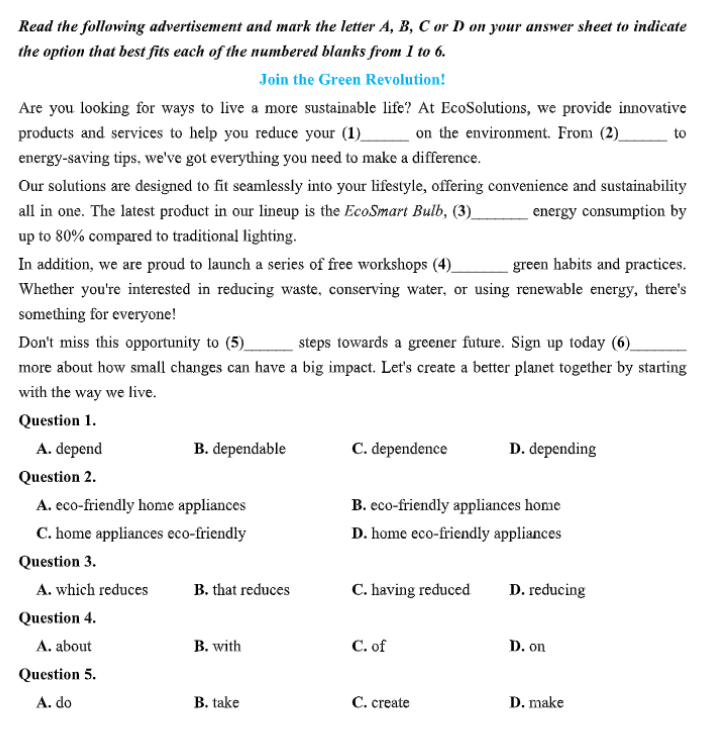
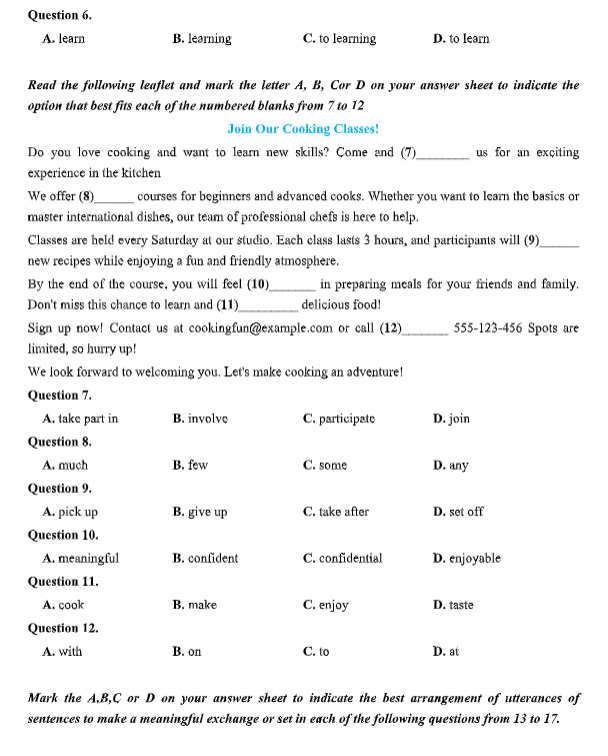
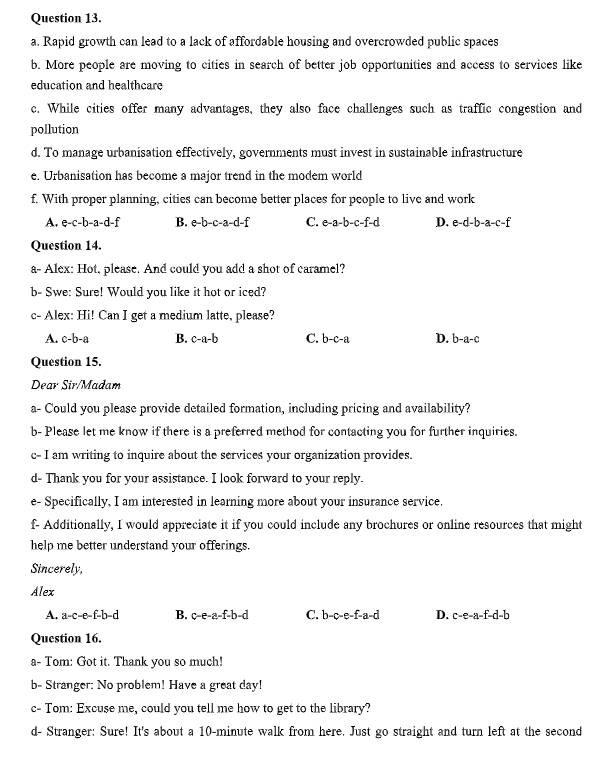
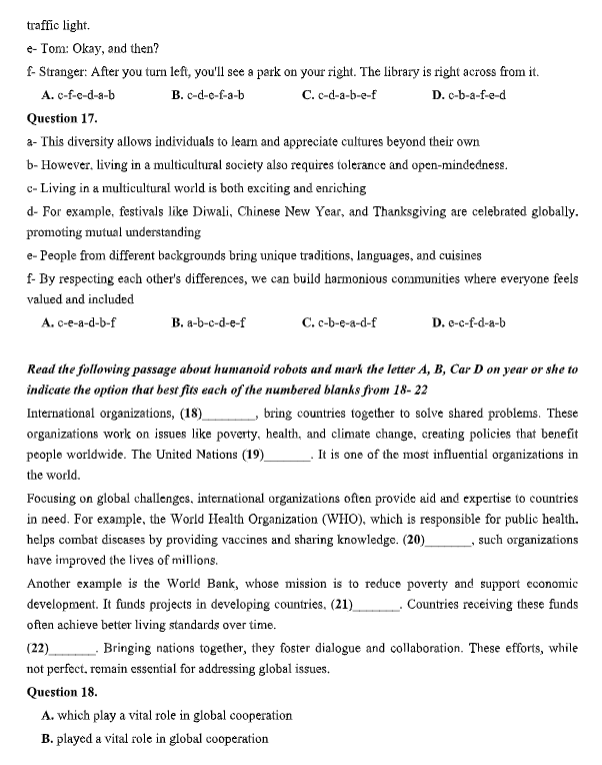
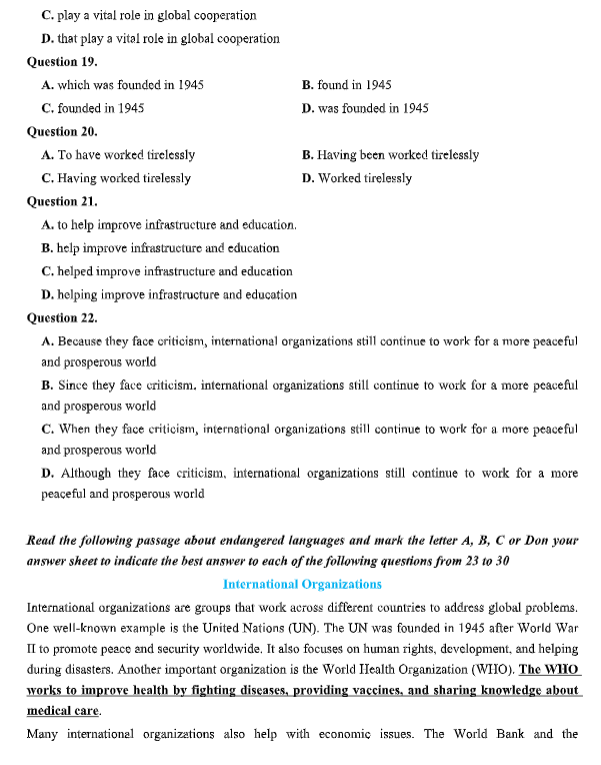
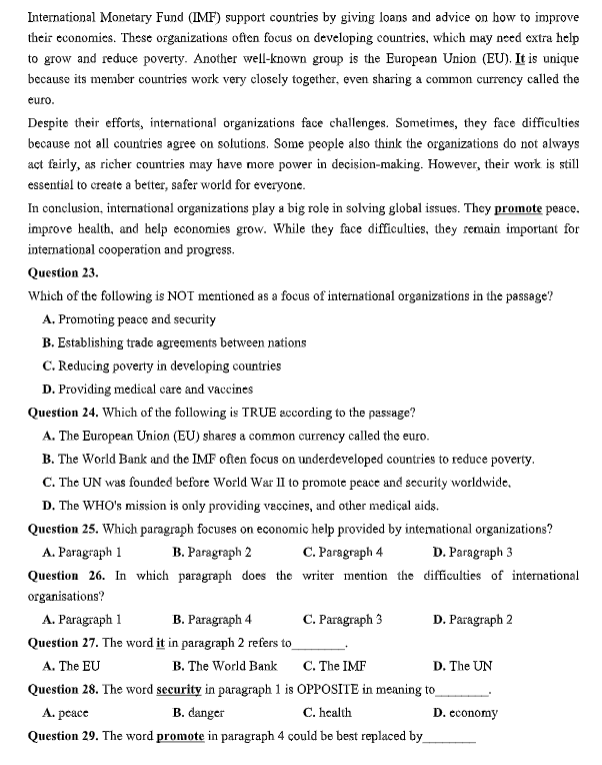
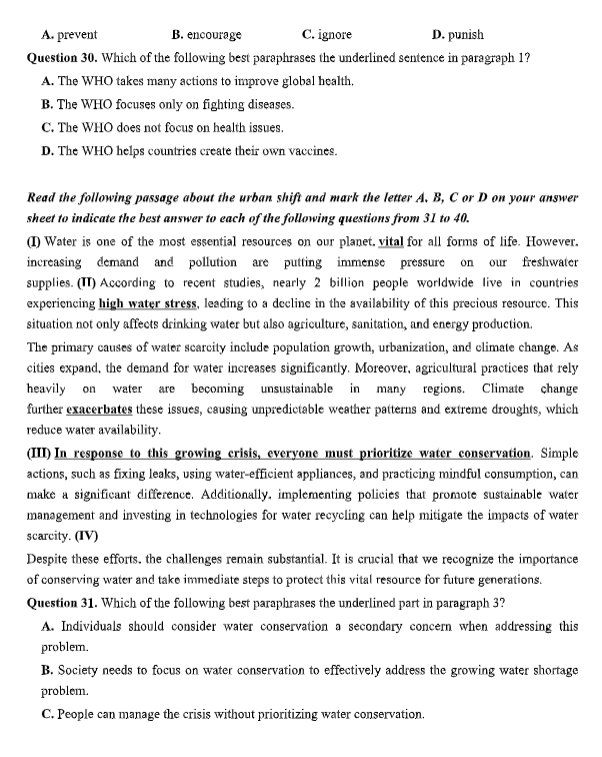
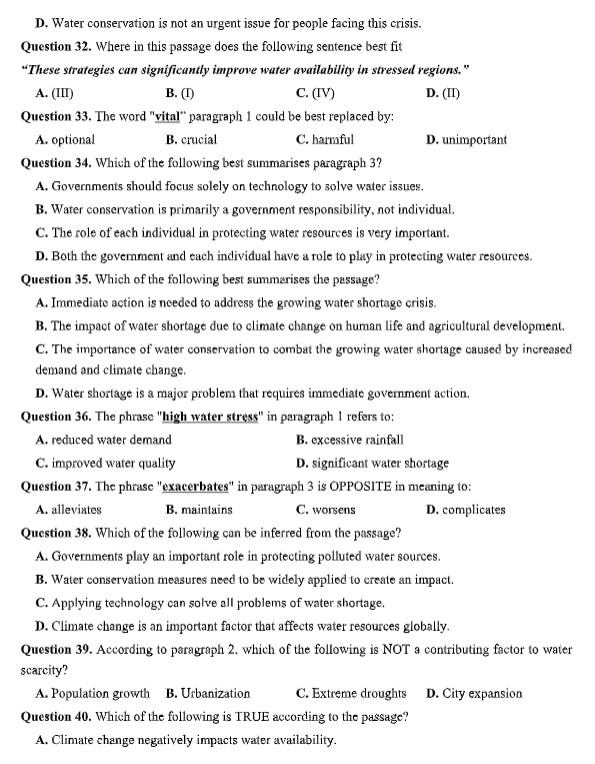
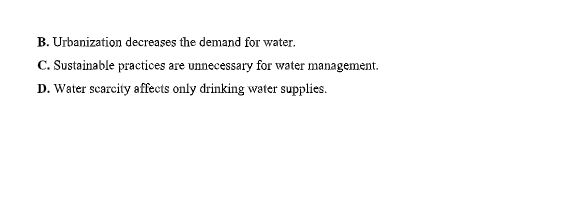
Read the following advertisement and mark the letter A, B, C or D on your answer sheet to indicate the option that best fits each of the numbered blanks from 1 to 6.
Join the Green Revolution!
Are you looking for ways to live a more sustainable life? At EcoSolutions, we provide innovative products and services to help you reduce your (1)______ on the environment. From (2)______ to energy-saving tips, we’ve got everything you need to make a difference.
Our solutions are designed to fit seamlessly into your lifestyle, offering convenience and sustainability all in one. The latest product in our lineup is the EcoSmart Bulb, (3)______ energy consumption by up to 80% compared to traditional lighting.
In addition, we are proud to launch a series of free workshops (4)______ green habits and practices. Whether you’re interested in reducing waste, conserving water, or using renewable energy, there’s something for everyone!
Don’t miss this opportunity to (5)______ steps towards a greener future. Sign up today (6)______ more about how small changes can have a big impact. Let’s create a better planet together by starting with the way we live.
Question 1:
A. depend
B. dependable
C. dependence
D. depending
Question 2:
A. eco-friendly home appliances
B. eco-friendly appliances home
C. home appliances eco-friendly
D. home eco-friendly appliances
Question 3:
A. which reduces
B. that reduces
C. having reduced
D. reducing
Question 4:
A. about
B. with
C. of
D. on
Question 5:
A. do
B. take
C. create
D. make
Question 6:
A. learn
B. learning
C. to learning
D. to learn
Read the following leaflet and mark the letter A, B, C or D on your answer sheet to indicate the option that best fits each of the numbered blanks from 7 to 12
Join Our Cooking Classes!
Do you love cooking and want to learn new skills? Come and (7)______ us for an exciting experience in the kitchen
We offer (8)______ courses for beginners and advanced cooks. Whether you want to learn the basics or master international dishes, our team of professional chefs is here to help.
Classes are held every Saturday at our studio. Each class lasts 3 hours, and participants will (9)______ new recipes while enjoying a fun and friendly atmosphere.
By the end of the course, you will feel (10)______ in preparing meals for your friends and family.
Don’t miss this chance to learn and (11)______ delicious food!
Sign up now! Contact us at cookingfun@example.com or call (12)______ 555-123-456 Spots are limited, so hurry up!
We look forward to welcoming you. Let’s make cooking an adventure!
Question 7:
A. take part in
B. involve
C. participate
D. join
Question 8:
A. much
B. few
C. some
D. any
Question 9:
A. pick up
B. give up
C. take after
D. set off
Question 10:
A. meaningful
B. confident
C. confidential
D. enjoyable
Question 11:
A. cook
B. make
C. enjoy
D. taste
Question 12:
A. with
B. on
C. to
D. at
Mark the A,B,C or D on your answer sheet to indicate the best arrangement of utterances of sentences to make a meaningful exchange or set in each of the following questions from 13 to 17.
Question 13:
a. Rapid growth can lead to a lack of affordable housing and overcrowded public spaces
b. More people are moving to cities in search of better job opportunities and access to services like education and healthcare
c. While cities offer many advantages, they also face challenges such as traffic congestion and pollution
d. To manage urbanisation effectively, governments must invest in sustainable infrastructure
e. Urbanisation has become a major trend in the modern world
f. With proper planning, cities can become better places for people to live and work
A. e-c-b-a-d-f
B. e-b-c-a-d-f
C. e-a-b-c-f-d
D. e-d-b-a-c-f
Question 14:
a- Alex: Hot, please. And could you add a shot of caramel?
b- Sue: Sure! Would you like it hot or iced?
c- Alex: Hi! Can I get a medium latte, please?
A. c-b-a
B. c-a-b
C. b-c-a
D. b-a-c
Question 15:
Dear Sir/Madam
a- Could you please provide detailed information, including pricing and availability?
b- Please let me know if there is a preferred method for contacting you for further inquiries.
c- I am writing to inquire about the services your organization provides.
d- Thank you for your assistance. I look forward to your reply.
e- Specifically, I am interested in learning more about your insurance service.
f- Additionally, I would appreciate it if you could include any brochures or online resources that might help me better understand your offerings.
Sincerely,
Alex
A. a-c-e-f-b-d
B. c-e-a-f-b-d
C. b-c-e-f-a-d
D. c-e-a-f-d-b
Question 16:
a- Tom: Got it. Thank you so much!
b- Stranger: No problem! Have a great day!
c- Tom: Excuse me, could you tell me how to get to the library?
d- Stranger: Sure! It’s about a 10-minute walk from here. Just go straight and turn left at the second traffic light.
e- Tom: Okay, and then?
f- Stranger: After you turn left, you’ll see a park on your right. The library is right across from it.
A. c-f-c-d-a-b
B. c-d-e-f-a-b
C. c-d-a-b-e-f
D. c-b-a-f-e-d
Question 17:
a- This diversity allows individuals to learn and appreciate cultures beyond their own.
b- However, living in a multicultural society also requires tolerance and open-mindedness.
c- Living in a multicultural world is both exciting and enriching.
d- For example, festivals like Diwali, Chinese New Year, and Thanksgiving are celebrated globally, promoting mutual understanding.
e- People from different backgrounds bring unique traditions, languages, and cuisines.
f- By respecting each other’s differences, we can build harmonious communities where everyone feels valued and included.
A. c-e-a-d-b-f
B. a-b-c-d-e-f
C. c-b-e-a-d-f
D. e-c-f-d-a-b
Read the following passage about international organizations and mark the letter A, B, C or D on your she or he to indicate the option that best fits each of the numbered blanks from 18- 22
International organizations, (18), bring countries together to solve shared problems. These organizations work on issues like poverty, health, and climate change, creating policies that benefit people worldwide. The United Nations (19). It is one of the most influential organizations in the world.
Focusing on global challenges, international organizations often provide aid and expertise to countries in need. For example, the World Health Organization (WHO), which is responsible for public health, helps combat diseases by providing vaccines and sharing knowledge. (20), such organizations have improved the lives of millions.
Another example is the World Bank, whose mission is to reduce poverty and support economic development. It funds projects in developing countries. (21) Countries receiving these funds often achieve better living standards over time.
(22)______ Bringing nations together, they foster dialogue and collaboration. These efforts, while not perfect, remain essential for addressing global issues.
Question 18:
A. which play a vital role in global cooperation
B. played a vital role in global cooperation
C. play a vital role in global cooperation
D. that play a vital role in global cooperation
Question 19:
A. which was founded in 1945
B. found in 1945
C. founded in 1945
D. was founded in 1945
Question 20:
A. To have worked tirelessly
B. Having been worked tirelessly
C. Having worked tirelessly
D. Worked tirelessly
Question 21:
A. to help improve infrastructure and education.
B. help improve infrastructure and education
C. helped improve infrastructure and education
D. helping improve infrastructure and education
Question 22:
A. Because they face criticism, international organizations still continue to work for a more peaceful and prosperous world
B. Since they face criticism, international organizations still continue to work for a more peaceful and prosperous world
C. When they face criticism, international organizations still continue to work for a more peaceful and prosperous world
D. Although they face criticism, international organizations still continue to work for a more peaceful and prosperous world
Read the following passage about endangered languages and mark the letter A, B, C or Don your answer sheet to indicate the best answer to each of the following questions from 23 to 30
International Organizations
International organizations are groups that work across different countries to address global problems. One well-known example is the United Nations (UN). The UN was founded in 1945 after World War II to promote peace and security worldwide. It also focuses on human rights, development, and helping during disasters. Another important organization is the World Health Organization (WHO). The WHO works to improve health by fighting diseases, providing vaccines, and sharing knowledge about medical care.
Many international organizations also help with economic issues. The World Bank and the International Monetary Fund (IMF) support countries by giving loans and advice on how to improve their economies. These organizations often focus on developing countries, which may need extra help to grow and reduce poverty. Another well-known group is the European Union (EU). It is unique because its member countries work very closely together, even sharing a common currency called the euro.
Despite their efforts, international organizations face challenges. Sometimes, they face difficulties because not all countries agree on solutions. Some people also think the organizations do not always act fairly, as richer countries may have more power in decision-making. However, their work is still essential to create a better, safer world for everyone.
In conclusion, international organizations play a big role in solving global issues. They promote peace, improve health, and help economies grow. While they face difficulties, they remain important for international cooperation and progress.
Question 23. Which of the following is NOT mentioned as a focus of international organizations in the passage?
A. Promoting peace and security
B. Establishing trade agreements between nations
C. Reducing poverty in developing countries
D. Providing medical care and vaccines
Question 24. Which of the following is TRUE according to the passage?
A. The European Union (EU) shares a common currency called the euro.
B. The World Bank and the IMF often focus on underdeveloped countries to reduce poverty.
C. The UN was founded before World War II to promote peace and security worldwide.
D. The WHO’s mission is only providing vaccines, and other medical aids.
Question 25. Which paragraph focuses on economic help provided by international organizations?
A. Paragraph 1
B. Paragraph 2
C. Paragraph 4
D. Paragraph 3
Question 26. In which paragraph does the writer mention the difficulties of international organisations?
A. Paragraph 1
B. Paragraph 4
C. Paragraph 3
D. Paragraph 2
Question 27. The word “it” in paragraph 2 refers to _______.
A. The EU
B. The World Bank
C. The IMF
D. The UN
Question 28. The word “security” in paragraph 1 is OPPOSITE in meaning to _______.
A. peace
B. danger
C. health
D. economy
Question 29. The word “promote” in paragraph 4 could be best replaced by _______.
A. prevent
B. encourage
C. ignore
D. punish
Question 30. Which of the following best paraphrases the underlined sentence in paragraph 1?
A. The WHO takes many actions to improve global health.
B. The WHO focuses only on fighting diseases.
C. The WHO does not focus on health issues.
D. The WHO helps countries create their own vaccines.
Read the following passage about the urban shift and mark the letter A, B, C or D on your answer sheet to indicate the best answer to each of the following questions from 31 to 40.
(I) Water is one of the most essential resources on our planet, vital for all forms of life. However, increasing demand and pollution are putting immense pressure on our freshwater supplies. (II) According to recent studies, nearly 2 billion people worldwide live in countries experiencing high water stress, leading to a decline in the availability of this precious resource. This situation not only affects drinking water but also agriculture, sanitation, and energy production.
The primary causes of water scarcity include population growth, urbanization, and climate change. Moreover, agricultural practices that rely heavily on water are becoming unsustainable in many regions. Climate change further exacerbates these issues, causing unpredictable weather patterns and extreme droughts, which reduce water availability.
(III) In response to this growing crisis, everyone must prioritize water conservation. Simple actions, such as fixing leaks, using water-efficient appliances, and practicing mindful consumption, can make a significant difference. Additionally, implementing policies that promote sustainable water management and investing in technologies for water recycling can help mitigate the impacts of water scarcity.
(IV) Despite these efforts, the challenges remain substantial. It is crucial that we recognize the importance of conserving water and take immediate steps to protect this vital resource for future generations.
Question 31. Which of the following best paraphrases the underlined part in paragraph 3?
A. Individuals should consider water conservation a secondary concern when addressing this problem.
B. Society needs to focus on water conservation to effectively address the growing water shortage problem.
C. People can manage the crisis without prioritizing water conservation.
D. Water conservation is not an urgent issue for people facing this crisis.
Question 32. Where in this passage does the following sentence best fit?
“These strategies can significantly improve water availability in stressed regions.”
A. (II)
B. (I)
C. (IV)
D. (III)
Question 33. The word “vital” paragraph 1 could be best replaced by:
A. optional
B. crucial
C. harmful
D. unimportant
Question 34. Which of the following best summarises paragraph 3?
A. Governments should focus solely on technology to solve water issues.
B. Water conservation is primarily a government responsibility, not individual.
C. The role of each individual in protecting water resources is very important.
D. Both the government and each individual have a role to play in protecting water resources.
Question 35. Which of the following best summarises the passage?
A. Immediate action is needed to address the growing water shortage crisis.
B. The impact of water shortage due to climate change on human life and agricultural development.
C. The importance of water conservation to combat the growing water shortage caused by increased demand and climate change.
D. Water shortage is a major problem that requires immediate government action.
Question 36. The phrase “high water stress” in paragraph 1 refers to:
A. reduced water demand
B. excessive rainfall
C. improved water quality
D. significant water shortage
Question 37. The phrase “exacerbates” in paragraph 2 is OPPOSITE in meaning to:
A. alleviates
B. maintains
C. worsens
D. complicates
Question 38. Which of the following can be inferred from the passage?
A. Governments play an important role in protecting polluted water sources.
B. Water conservation measures need to be widely applied to create an impact.
C. Applying technology can solve all problems of water shortage.
D. Climate change is an important factor that affects water resources globally.
Question 39. According to paragraph 2, which of the following is NOT a contributing factor to water scarcity?
A. Population growth
B. Urbanization
C. Extreme droughts
D. City expansion
Question 40. Which of the following is TRUE according to the passage?
A. Climate change negatively impacts water availability.
B. Urbanization decreases the demand for water.
C. Sustainable practices are unnecessary for water management.
D. Water scarcity affects only drinking water supplies.
Mục đích tổ chức kỳ thi Đại học năm 2025 là gì?
Căn cứ theo quy chế hiện hành của Bộ Giáo dục và Đào tạo và các văn bản hướng dẫn tổ chức kỳ thi Đại học năm 2025, mục đích của kỳ thi là:
– Đánh giá kết quả học tập của học sinh sau 12 năm học theo yêu cầu của chương trình giáo dục phổ thông.
– Lấy kết quả thi để xét công nhận tốt nghiệp trung học phổ thông và làm căn cứ tuyển sinh đại học, cao đẳng.
– Góp phần đánh giá chất lượng giáo dục của địa phương và cả nước, làm cơ sở điều chỉnh nội dung, phương pháp dạy học trong nhà trường.
Thí sinh thi Đại học năm 2025 có bắt buộc thi môn Tiếng Anh không?
Theo quy định hiện hành của Bộ Giáo dục và Đào tạo và hướng dẫn tổ chức kỳ thi tốt nghiệp Đại học năm 2025, thí sinh dự thi phải thực hiện như sau:
– Thi 3 môn bắt buộc: Toán, Ngữ văn và Ngoại ngữ.
– Ngoài ra, thí sinh phải chọn một trong hai bài thi tổ hợp: Khoa học Tự nhiên (gồm các môn Vật lí, Hóa học, Sinh học) hoặc Khoa học Xã hội (gồm các môn Lịch sử, Địa lí, Giáo dục công dân – dành cho học sinh học chương trình giáo dục phổ thông).
Trong số các môn thi, Tiếng Anh là một trong ba môn thuộc bài thi Ngoại ngữ bắt buộc, thí sinh phải thi môn Tiếng Anh như một môn bắt buộc, không phụ thuộc vào lựa chọn bài thi tổ hợp hay mục đích xét tuyển đại học.
Như vậy, kỳ thi Đại học năm 2025 bắt buộc thí sinh phải thi môn Tiếng Anh.

